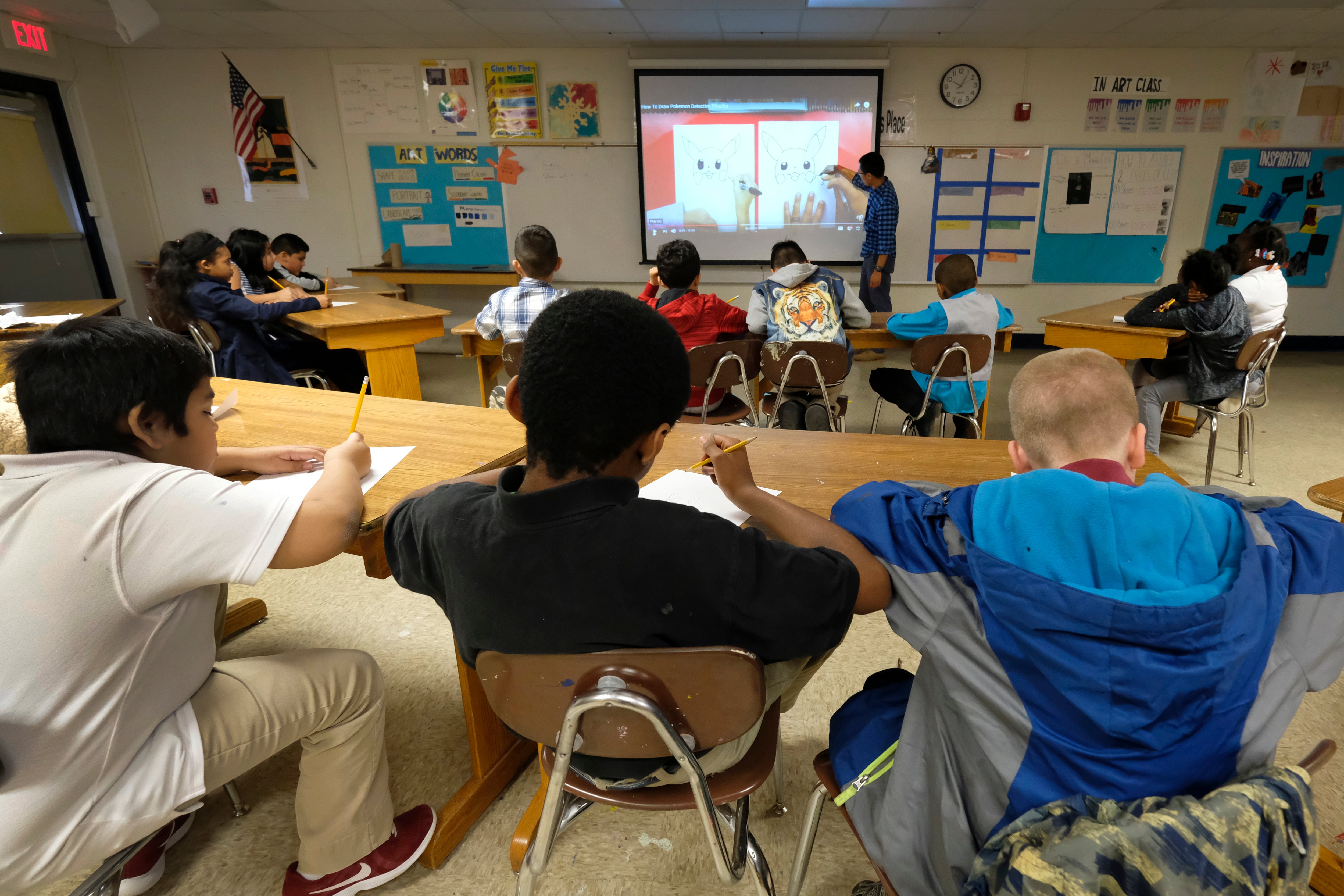Indiana school districts will not face state funding cuts next school year, Gov. Eric Holcomb announced Wednesday — an assurance that had seemed unlikely amid steep state revenue shortfalls.
State lawmakers have agreed to move forward with the current budget, including a planned $183 million increase to school funding, Holcomb said during a scheduled video conference.
“We did not want to limit resources as school corporations must prepare and execute a productive and safe learning environment,” said Indiana Office of Management and Budget director Cris Johnston during the announcement.
The news came as a relief for school district leaders who were preparing for cuts and need to take potentially costly coronavirus precautions to open in the fall. But it’s a far cry from what teachers had hoped for when thousands rallied at the statehouse months before the state’s first coronavirus case.
Facing pressure, Holcomb, who is up for re-election in November, pledged in January to boost teacher salaries by spending $250 million of the state’s reserves to free up more money for schools. But on Wednesday, Johnston said keeping the budget steady is “the best we are going to be able to do during this time period.”
The state is expected to end the fiscal year this month with a nearly $2 billion budget shortfall, Johnston said. Without cuts, planned spending could significantly deplete the state’s $2.3 billion surplus.
Budgets for other state agencies have already been reduced and plans released last week propose public universities take a 7%, or $103 million, cut. Many school district leaders were preparing for similar reductions, since funding for K-12 education accounts for about half of the state’s spending — more than $7 billion a year.
“I am pleased our state decision makers will not cut funding from Indiana K-12 education,” State Superintendent Jennifer McCormick said in a statement following the announcement. “Schools will have one less stressor as they continue to educate our students during this unprecedented time.”
Holcomb also said he supports the Indiana Department of Education’s decision last week to protect schools from losing funding for students who choose to take classes online. Typically, online students are funded at 85% of what brick-and-mortar schools receive.
The Indiana State Teachers Association thanked teachers for being vocal about their funding concerns, applauding the state’s decision.
“While concerns about the coming school year remain, these fiscal decisions give educators confidence that we can provide students a quality education in a safe environment this fall,” the state’s largest teachers union said in a statement. “We encourage the governor and legislators to continue making educators and kids a priority in the next budget year.”
School districts have been looking to lawmakers for financial assurances as they put together plans to reopen in the fall. New coronavirus safety precautions recommended by the state could be costly to implement, and McCormick has cautioned that federal relief likely won’t go far for most districts.
Early in Indiana’s coronavirus response, state leaders said K-12 funding would not change under the current budget. But their promises didn’t initially extend beyond this past school year. The Indiana General Assembly is scheduled to set a new two-year budget in the upcoming legislative session, which is set to start in January.
“Well call me stunned,” Southeast Fountain Schools Superintendent Dan Foster tweeted, “but thank you...”
When asked what this means for those future budget conversations, Holcomb said the state will “cross the January bridge when we get to January.” But he said he’s optimistic about the state’s economic recovery.
To make up for the expected shortfall, Johnston said the state will have to be “very disciplined” with the other cuts that have already been imposed and take another look at the list of planned capital projects for additional savings. The state will also rely on federal relief.
If that’s not enough, Johnston said the state might have to dip into the reserves “a little bit more.”
Schools in other states are already facing proposed cuts, including in New York, California, and Colorado. A school district in Denver is asking teachers to forgo some of the pay raises agreed to after a three-day teacher strike last year.
Johnston did caution district leaders not to “over commit” with their spending this year, saying it’s still unclear what restraints may be put on the state budget next spring after new forecasts are drawn.
The last time the country faced a recession, about a decade ago, then-Gov. Mitch Daniels cut $300 million from education funding. Public education advocates argue that school budgets have never fully recovered.







